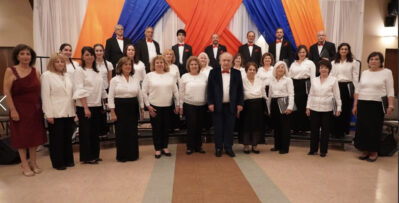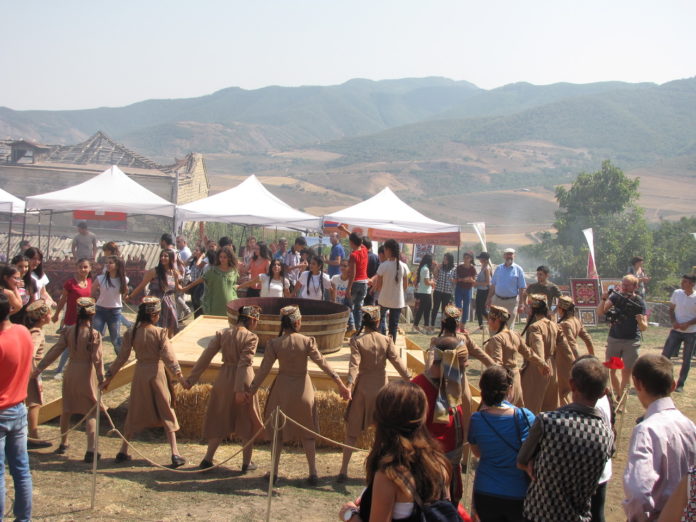By Hovsep Daghdigian
TOGH, Artsakh — It would have been hard to imagine a more suitable site for the Artsakh Wine Festival (Sept. 16, 2017) than Togh village in Artsakh’s Hadruit marz (district). It is easily accessible; there is one main road through the village. In the village center is an expansive preserve containing extensive remains of the medieval residence and administrative structures of the Dizak meliks; Melik Yegan and his successors. Togh and much of the Hadrut region was part of a medieval region called “Dizak.”
Much of Karabagh was ruled by five medieval princes called “meliks”. It is believed that many of the meliks were descendants of earlier Armenian nobles. Though there were perhaps 100-200 meliks according to some sources; five meliks, called the “khmsa melikoutyounner” (“khmsa” is “five” in Arabic), were the central governing body with Melik Yegan (Yeganyan) and his successors being the chief among them. The Togh site is being preserved and renovated with a descendent of Melik Yegan overseeing the restoration. Numerous signs, both in English and Armenian, are posted with historical notes, photographs, and diagrams explaining the history and architecture of the site.
The meliks were established from the 15-18th century when Persia was in conflict with the Turks for control of the area. Local Armenian rulers, allied with the Persians against Turkish rule, were given autonomy by the Persians and allowed to maintain armies, all of course subservient to Persian authority. Persian Nadir Shah (ruled 1732-1747) approved the confederation of the Khmsa Meliks in the medieval principalities of Gulistan, Jraberd, Khachen, Varanda, and Dizak; all in Artsakh, headed by Dizak’s Melik Yegan.
The main two-story building at the Togh site was the palace was built in 1737 by Melik Yegan, the son of a priest. Other structures include reception halls, and the 17th century Saint Hovhaness church above the palace complex. There is the possibility that an earlier church existed on the site. Near the church are gravestones of the Dizak meliks. The site abounds in other structures as well.
At the wine festival there was, of course, wine tasting with opportunities to purchase local wines. Food was in abundance with kebab, khorovats, corn, with the specialty being Togh’s unique harissa (“korkot” in the local dialect) made with pork as opposed to the traditional use of chicken or lamb. Numerous local handicrafts, pastries, preserves, etc. were also available. But most impressive was the singing of patriotic songs both by individuals and groups as well as dancing by local youth groups. A young man sang songs from Sassun which, like Artsakh, is mountainous with its people fiercely defensive of their liberty. I could not imagine a more apt location for such a festival. Simply to hear the music, soak up some history, and jostle in line to get some harissa, was a unique and rewarding experience.








